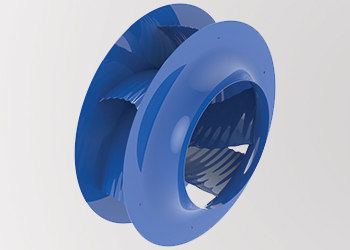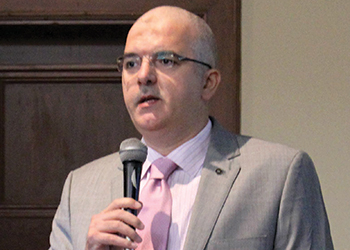
BHUSHAN AVSATTHI* highlights the impact of green building and sustainable practices on the HVACR market in the Middle East.
The Middle East’s MEP (mechanical, electrical and plumbing) segment has always been a crucial component of the region’s construction industry. And with temperatures normally soaring above 50 deg C, HVACR (heating, ventilation, air-conditioning and refrigeration) has remained a critical part of the industry, seeing a sustained growth, despite a slump in the economy.
At the end of 2014, the global HVACR market stood at $80.6 billion, and it is expected to grow to $108 billion by 2020. For the GCC countries, a bulk of this growth stems from a revival of construction activity in the residential, commercial, industrial, and retail segments.
This revival is driven by evolving construction technologies, key among them being the implementation of BIM (building information modelling) in the design, planning, construction and facility management stages of a building project; and international and regional sustainability policies, where Abu Dhabi is leading from the front, making it mandatory for construction projects to comply with Estidama requirements. Other GCC regions too are putting an emphasis on Leed (Leadership in Energy and Environmental Design) certification.
The HVACR industry does not remain untouched by these changes and advances. Being responsible for temperature control and the functionality of the MEP systems in residential, commercial, industrial, and institutional buildings in one of the hottest climates in the world is no mean feat. And this responsibility comes with the added challenge of conforming to stringent, globally accepted standards of energy efficiency.
The HVACR systems of any built structure are the biggest guzzlers of energy, and by extension, also the biggest contributors to global warming, and increasing the carbon footprint of that structure. Hence, it comes as no surprise that the local governments in the Mena (Middle East and North Africa) region are regulating the power usage by built structures.
Despite this challenge, the sector has shown a marked growth in the recent times. According to a 2015 report by TechSci Research, “the air-conditioning market in Saudi Arabia is set for growth of up to 14 per cent every year until 2020”. The report further elaborates on the refrigeration sector mentioning that, “the refrigeration market in Saudi Arabia grew at a CAGR (compound annual growth rate) of around 11.8 per cent during 2010-14, and is projected to grow at a CAGR of around 12.27 per cent over the next five years. Growth in the refrigeration market is anticipated on account of rising demand, particularly from the commercial and industrial sector in the country”.1
The UAE’s leading district energy agency DC Pro Engineering has stressed on the need for the region’s HVACR industry to adopt more energy-efficient, environment-friendly, and sustainable technologies to address global warming and energy efficiency challenges.
This comes in the wake of a greater stress being laid on the need to increase sustainable practices in and across industries, all over the world. The Association of Home Appliance Manufacturers (AHAM) in the US believes that, “in terms of next-generation refrigerant development, in addition to global warming potential and ozone-depletion potential, the key trends at the forefront of 2016 will include theoretical versus applied efficiencies, flammability, toxicity, and refrigerant handling and safety”.2
Industry leaders in HVACR in the Middle East are responding to these challenges by adopting the latest technologies and moving away from legacy systems to equipment that uses alternate, and often, renewable sources of energy – with an emphasis on geothermal and solar.
In April 2015, the UAE’s HVACR market was treated to a first-of-its-kind air-conditioner that works on solar energy, by Gree Electric Appliances of China. Other companies are expected to follow suit, or work with newer technologies that don’t make a dent on the environment.
A corollary of the energy-efficiency trend is the integration of the Internet of Things (IoT) into the HVAC components and machinations. An increasing number of constructions today are adopting building automation systems (BAS) to increase the occupant’s comfort, reduce energy consumption, and enhance the lifecycle of the HVACR equipment. To this end, the new-age HVACR devices are designed and developed in such a way that their software component communicates with the company’s controls, ensuring preventive maintenance, enabling the manufacturer to fix problems remotely, or raising a request for intervention where required.
The economic slump has ensured that constructors get more innovative, and find ways of saving on their expenditure heads on a building project, without compromising on the quality and strength of the structure.
Breaking away from the common practice of creating the HVACR layouts at a later stage of the building construction’s progress, the advent of CFD (computational fluid dynamics) analysis can help in a more efficient layout planning and enables the project’s stakeholders to minimise costs, while implementing energy-efficient, and environment-friendly HVACR systems.
An excellent example of CFD analysis at work was seen when a busy, international airport in South-East Asia opted for it to determine heat loads of people, shops, and other objects in the premises, to determine the air flow and thermal comfort levels, and was able to make substantial savings, evaluating and implementing the most cost-effective and energy-efficient HVACR solutions for their premises.
As the GCC’s construction industry looks to reform the way it constructs, the onus lies on the HVACR and MEP contractors, to ensure that they choose alternatives that are built to fulfil the expectations from the industry in reducing the sector’s and the region’s carbon footprint, constructing buildings that are sustainable, and are as good for the environment as for their occupants’ comfort and safety.
* Bhushan Avsatthi is a BIM expert, a certified sustainable building advisor, and an associate director at Hi-Tech Outsourcing Services.
References
1. https://www.thebig5hub.com/knowledge/2015/june/report-saudi-arabia-set-for-record-growth-in-hvac-sector-for-five-years/
2. http://www.achrnews.com/articles/131856-household-refrigerator-industry-sets-goal-to-eliminate-use-of-hfc-refrigerants.





















_0001.jpg)


.jpg)
















.jpg)








.jpg)




